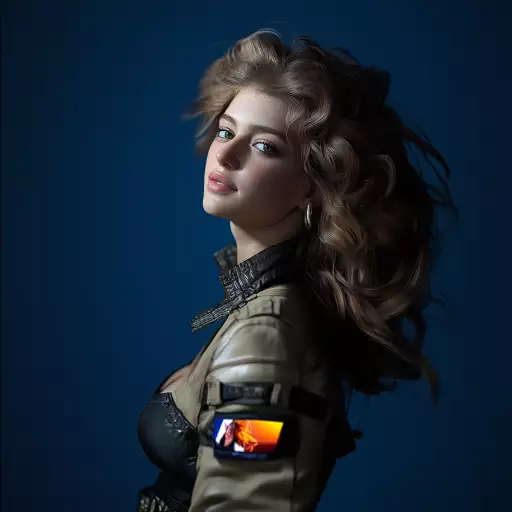Explore the Best AI Image Gallery

AI-Generated Media: A Canvas of Innovation and Ethical Quandaries
The realm of creativity is undergoing a profound transformation as artificial intelligence (AI) steps onto the canvas, wielding the power to generate art, music, text, and even video. This burgeoning field of AI-generated media presents both exhilarating opportunities and complex ethical dilemmas that demand careful consideration.
The Artistic Potential Unleashed
AI algorithms, trained on vast datasets of creative works, can now produce outputs that mimic human artistry with astonishing accuracy. From generating intricate paintings and sculptures to composing captivating symphonies and weaving compelling narratives, AI is pushing the boundaries of whats considered possible in artistic creation.
- Text Generation: AI models like GPT-3 can craft poems, scripts, articles, and even code with remarkable fluency and coherence.
- Image Synthesis: Algorithms such as DALL-E 2 and Stable Diffusion can conjure images from textual descriptions, blurring the lines between imagination and reality.
- Music Composition: AI tools can generate original melodies, harmonies, and even entire musical pieces in various genres, offering a new dimension to artistic expression.
A New Era of Collaboration
AI-generated media is not intended to replace human creativity but rather to augment it. Artists can leverage AI as a powerful tool to explore new ideas, overcome creative blocks, and streamline workflows. This collaborative approach fosters innovation and opens up exciting possibilities for cross-disciplinary projects.
- Concept Development: AI can generate initial concepts and variations, providing artists with a springboard for further exploration.
- Iteration and Refinement: AI algorithms can assist in iterating designs, refining compositions, and optimizing elements based on predefined parameters.
- Accessibility: AI-powered tools can empower individuals with limited artistic skills to create and express themselves creatively.
Navigating the Ethical Landscape
While the potential of AI-generated media is undeniable, it also raises crucial ethical considerations that warrant careful attention.
- Copyright and Ownership: Questions arise regarding the ownership of AI-generated works, as the creative process involves both human input and algorithmic output.
- Bias and Representation: AI algorithms are trained on existing data, which can perpetuate societal biases and lead to skewed representations in generated media. It is essential to ensure fairness and inclusivity in the training datasets.
- Authenticity and Deception: The ability of AI to create highly realistic content raises concerns about potential misuse for spreading misinformation or manipulating public opinion.
- Job Displacement: There are anxieties that AI-generated media could displace human creative professionals. However, its more likely that AI will reshape the industry, creating new roles and opportunities.
Shaping the Future of Creativity
The future of AI-generated media is brimming with possibilities. As technology advances, we can expect even more sophisticated and versatile AI tools to emerge, further blurring the lines between human and machine creativity.
- Immersive Experiences: AI could generate personalized and interactive narratives, transporting users to immersive worlds.
- Personalized Content Creation: AI-powered platforms could enable individuals to create customized art, music, and stories tailored to their preferences.
- Democratization of Creativity: AI tools can empower individuals with limited resources or technical skills to participate in the creative process.
To harness the full potential of AI-generated media while mitigating its ethical challenges, it is crucial to foster open dialogue, establish clear guidelines and regulations, and promote responsible development and deployment of these transformative technologies. The future of creativity lies in a harmonious collaboration between human ingenuity and artificial intelligence, where both forces work together to push the boundaries of artistic expression.
](https://images.ai-img.art/thumbnails/150/f67d9af3398150f2ab1bcf250717fea134275e2ca896252b54a4d9bb3719f9ac.webp)
](https://images.ai-img.art/thumbnails/150/008b5d5d49667cc2e93a5f8a8adfaa545963da99c39ff0901f5296294636400d.webp)










](https://images.ai-img.art/thumbnails/150/f9584153b4cddd8c9fab611dc10247549b275c59bc173251e37d0935874f9deb.webp)

](https://images.ai-img.art/thumbnails/150/bddf3ae4a232290858389b933c866ad3be429ef2e25c23a9f4d7713ed6e44d0b.webp)















](https://images.ai-img.art/thumbnails/150/c2c9c48b38fae37f0a457b80b084ed01ba803810fc8f488c8f610c03abc74049.webp)



](https://images.ai-img.art/thumbnails/150/4289d1230b86a96c4d556636c3167bed0ef38f850826549517e4e45db4d87bf7.webp)






